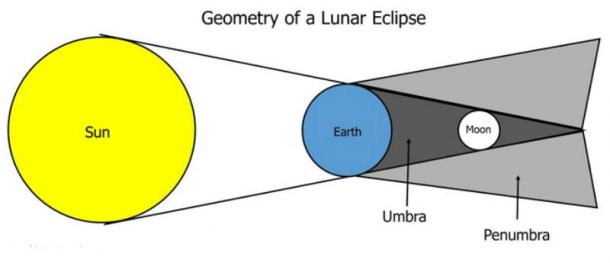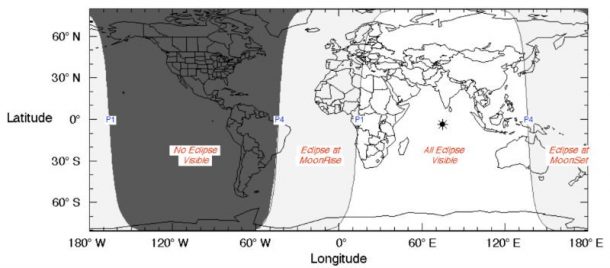Here we go again! We are lucky enough to fit in another lunar eclipse in the year 2016. But this time, it will be better and more fascinating than ever, as this weekend’s lunar eclipse will coincide with the harvest moon – something that will not appear again until 2024.
For the second time in 2016, a full moon will coincide with a lunar eclipse, which will be visible in Europe, Asia, Africa, and Australia, though the people across North America and South America will have to wait until 2017 to see another eclipse.
As most of the basic physics students already know, Earth has two types of shadows – penumbral and umbral. The umbra is the cone of darkness moving away from Earth, while the penumbra is has a lighter shadow spreading out from the edges of the umbra.

The eclipse will last for around 3 hours, when Friday’s full moon moves into this light shadow, causing a penumbral lunar eclipse.
Although the penumbral lunar eclipse isn’t the easiest one to spot, but with clear skies, you should be able to detect some shadows in the upper quarter of the Moon without any fancy telescopes.
As science writer Andrew Fazekas wrote for National Geographic:
“Because the darkening will be so slight, the best bet for viewers will be to use binoculars or telescopes to catch the creep of Earth’s shadow as it blankets the Moon’s usual glare. Expect to see the darkening effect start over the northern portion of the Moon’s limb and envelope about 91 percent of its disk during its maximum phase.”
The exact time of the eclipse is estimated to be from Friday 16 September at 4:54 pm UTC to 6:54 pm UTC when it will be at its peak.
This will make the total time of the eclipse to be exactly 3 hours, 59 minutes and 16 seconds. So be sure to clear out your calendar for this, as it is going to be the last harvest moon eclipse until 2024.
But for the people who unfortunately will miss out on the action for one reason or another, you can watch the whole event via Slooh Observatory’s live online feed.
The live stream will launch on Friday, 16 September at 4:54 pm UTC, so make sure to bookmark the link.

But here’s the good news, even if you can’t see an eclipse in North and South America, you still will be able to witness the harvest moon; which is quite an incredible sight.
And it is going to be a designated harvest moon since it’s the closest one to the autumn equinox in the Northern Hemisphere.
“Rising about half an hour later each night, the added light from the full moon’s shine is said to have given farmers more time to harvest their crops,” says Fazekas.
Where are you planning to watch this amazing and rare sight? Let us know in the comments’ section below!


